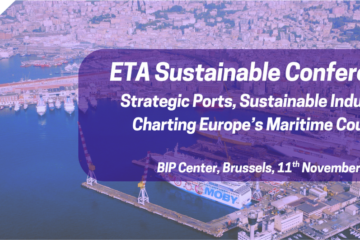The United Nations Conference on Trade and Development (UNCTAD) presented the 2017 edition of its review of Maritime Transport. The publication examines the current situation of the sector and the long-term prospects for seaborne trade.
The publication underlines the moderate demand for shipping services in 2016. Global seaborne trade volumes expanded by 2.6%, up from 1.8% in 2015, still below the historical average of 3% registered during the last decades. Projections for the medium term also point to continued expansion, with volumes growing at an estimated compound annual growth rate of 3.2 per cent between 2017 and 2022.
Concerning the world fleet capacity, it experienced a slight increase of 3.2%, down from 3.5% in 2015. This increase does not help solving the overcapacity problem maritime trade suffering at the moment. “A slower demand than earlier projected, coupled with a large influx of vessels, has led to a continued oversupply of shipping capacity,” said UNCTAD Secretary-General Mukhisa Kituyi.
During the current decade, the growth of world trade has expanded at a slower pace compared to the global GDP growth levels. Demand for maritime transport services remains heavily dependent on the performance of the world economy, and last year, its growth was modest with a expansion of 2.2% down from 2.6% in 2015. This small GDP growth had a negative effect on the world trade figures that experienced a limited increase of 1.9%. Trade growth was also weak in relation to world GDP growth, following the trend that began with the financial crisis. The report mentions “cyclical factors such as the weakness in global demand and the slowdown in economic activity,and structural factors such as the slowdown in the pace of globalization and supply chain fragmentation” as the cause for the slow growth of global trade.
World seaborne trade shipments are expected to grow marginally in 2017. Still, developments like the Economic Partnership Agreement concluded between the European Union and Japan, the CETA Agreement between the EU and Canada which is provisionally into force since September 21 or the effects of Brexit could have a big impact on the global and especially on the EU maritime trade sector.
This aforementioned decline in trade growth has also affected the overall port industry. The port-handling growth rates remained below the historical trends of the 1980–2016. In Europe these passed from a 2.4% in 2015 to a 2.8% in 2016, a quite modest increment. This growth in volume was especially significant in Piraeus, which experienced in 2016 the largest expansion among the top 20 ports in the world by volume handled with an impressive 14% increase.
If you want to read the report can download it here



0 Comments